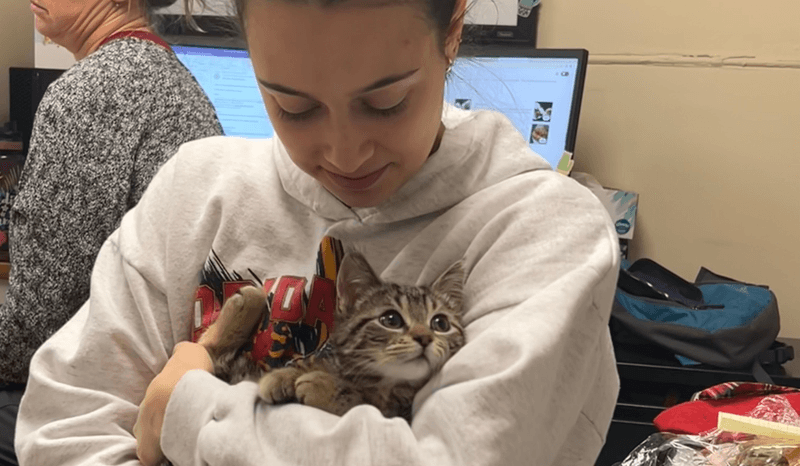📖 Table of Content:
Welcoming a cat into your life can be an incredibly rewarding experience. These furry companions offer warmth, companionship, and even moments of comic relief that brighten your day. However, beyond the soothing purrs and playful antics lies a complex relationship that may come with hidden health implications.
Cat ownership isn’t solely about joy and cuddles—it also involves responsibilities that can directly or indirectly affect your well-being. While many of these effects are positive, there are several medical and environmental risks that every cat owner should be aware of. Understanding both sides of the story equips you to make informed choices for your health and that of your feline friend.
This article explores eight distinct ways that living with cats can influence your health. From exposure to parasites to surprising emotional benefits, we’ll take a deep dive into each aspect to help you maintain a balanced and safe relationship with your pet. Whether you’re a longtime cat parent or considering adoption, these insights will help you navigate your journey with clarity and care.
1. Toxoplasmosis Exposure
Exposure to Toxoplasma gondii, a parasite found in cat feces, can pose a risk to humans—especially pregnant individuals and immunocompromised people. The parasite is typically transmitted when handling soiled litter or contaminated soil. While most healthy individuals show no symptoms, those with weakened immune systems may experience flu-like signs or more severe complications. Importantly, toxoplasmosis can cause congenital issues if a pregnant person is infected for the first time during pregnancy. You can reduce risk by wearing gloves when gardening and avoiding raw meat, which may also carry the parasite. Cleaning the litter box daily helps prevent the parasite from becoming infectious, as it takes 1–5 days to become active. Ultimately, proper hygiene and awareness go a long way in minimizing this risk.
2. Allergies and Asthma Triggers
For individuals sensitive to allergens, living with a cat may worsen symptoms or introduce new respiratory issues. Proteins in a cat’s skin cells, saliva, and urine are known allergens that cling to surfaces and linger in the air. Even cat breeds marketed as “hypoallergenic” still produce these proteins, albeit in potentially smaller quantities. Regular vacuuming, using HEPA filters, and limiting the cat’s access to certain areas like bedrooms can help. Those with asthma may experience tighter chest sensations, increased coughing, or wheezing when exposed to these allergens. In severe cases, constant exposure can lead to chronic respiratory conditions or reduced quality of life. Consulting an allergist before bringing a cat home is a wise step for at-risk individuals.
3. Cat Scratch Disease (CSD)
Unlike a typical scratch, a wound from a cat—especially a kitten—can sometimes introduce Bartonella henselae, the bacteria responsible for Cat Scratch Disease. It often starts with a mild bump or blister at the site of the scratch or bite and may evolve into swollen lymph nodes, fever, and fatigue. Although the condition is usually self-limiting, it can become more serious in those with weakened immune systems. Young cats are more likely to carry the bacteria, particularly if they have fleas. Preventing CSD involves discouraging rough play and regularly treating cats for fleas. Thoroughly washing any scratches or bites right away is crucial to lowering infection risk. Always consult a doctor if you notice symptoms after a cat-related injury.
4. Fleas and Ticks
Though small, fleas and ticks can become big problems when brought into your home via your cat. These parasites may transmit a range of diseases to humans, such as Lyme disease, flea-borne typhus, or even plague in rare cases. Cats that roam outdoors are at higher risk of picking up these hitchhikers, which can then infest your home environment. You might notice increased itching, red bites, or visible bugs in carpets and bedding if a flea infestation takes hold. Using vet-approved flea and tick prevention treatments year-round is highly effective. It’s also a good idea to regularly groom your cat and check for parasites, especially during warmer months. Swift action at the first sign of fleas or ticks is essential to maintaining both pet and human health.
5. Mental Health Benefits
On a brighter note, cat ownership has been shown to offer meaningful mental health benefits for many individuals. Spending time with cats can reduce stress and anxiety by stimulating the release of oxytocin, a hormone associated with bonding and calmness. The gentle rhythm of a cat’s purr and the act of petting can create a meditative-like effect. For people who live alone, a cat’s companionship can counter feelings of isolation and loneliness. Additionally, caring for a cat provides a sense of routine and purpose, which may help those managing depression. Interacting with animals has even been linked to lower blood pressure and heart rate. In this way, cats serve not just as pets but as gentle emotional support partners.
6. Sleep Disruption
Nighttime harmony can be disrupted when you share a home—or a bed—with a cat. Cats are naturally more active during dusk and dawn, often engaging in what’s known as the “zoomies” when you’re trying to sleep. Pouncing on toes under the covers or meowing at closed doors are common late-night antics. While endearing during the day, these behaviors can lead to fragmented sleep and fatigue over time. Setting boundaries by providing a separate sleeping area or using an automatic feeder to prevent early wake-ups can help. Some owners choose to keep their cats out of the bedroom entirely for better rest. A good night’s sleep may depend on finding a balance between affection and space.
7. Injury Risks from Bites or Scratches
Physical injuries from cats—such as bites or deep scratches—may seem minor at first but can sometimes become serious. Cat bites, in particular, can introduce bacteria deep into tissues due to their sharp, narrow teeth. If untreated, this can lead to infections like cellulitis or even abscesses that require medical intervention. Children and elderly individuals are especially vulnerable due to thinner skin or slower healing. Avoiding aggressive play and recognizing feline body language can prevent most incidents. If you’re bitten or scratched, promptly clean the area with soap and water and monitor for signs of redness or swelling. Seeking medical advice is advised if symptoms worsen after a day or two.
8. Zoonotic Disease Transmission
Occasionally, cats can transmit diseases to humans, known as zoonoses, through direct or indirect contact. Ringworm, a contagious fungal infection, is commonly spread from cats to humans and is especially prevalent in shelters or multi-cat households. Other diseases, like salmonella, can be contracted through handling contaminated cat food or litter. In rare cases, rabies may be transmitted if a cat is unvaccinated and exposed to wildlife. Ensuring your cat receives regular veterinary care and vaccinations is your best line of defense. Basic hygiene practices, such as handwashing after handling litter or feeding, reduce the chance of transmission. Staying informed about potential zoonotic threats allows you to act quickly and responsibly if symptoms arise.








